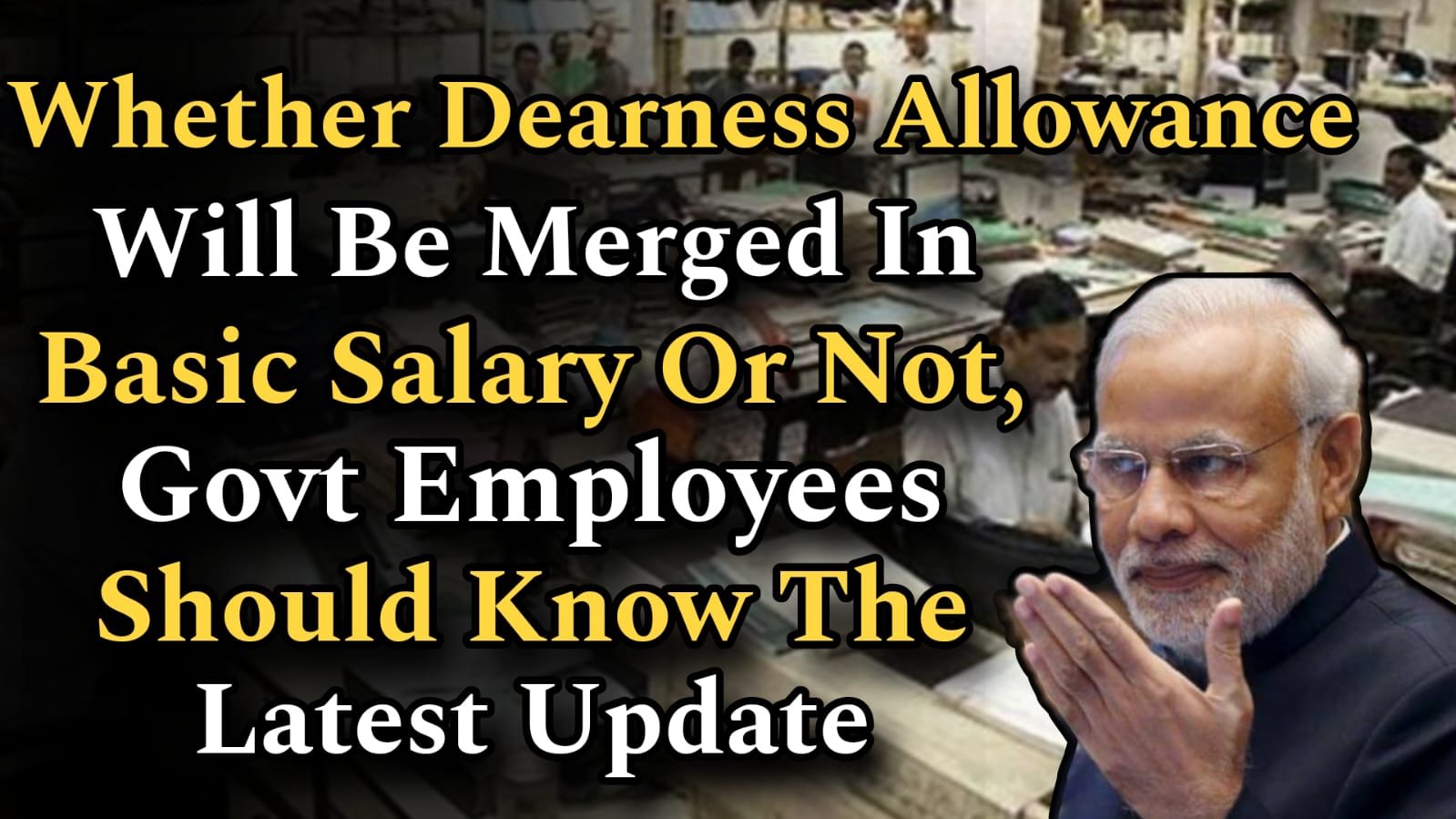Dearness Allowance Calculation : As inflation continues to rise steadily, government employees across India are eagerly awaiting the implementation of the 8th Pay Commission. With the cost of living increasing every day, there is growing anticipation that the new pay commission will bring significant salary revisions. A key point of discussion among employees and financial experts alike is whether the Dearness Allowance (DA), which is currently calculated separately, will be merged into the basic salary under the new pay structure.
Recently, the Central Government increased the DA of central government employees by 2% under the 7th Pay Commission, taking the total DA to 55% of the basic salary. This increase, though welcome, has reignited discussions around long-term reforms and the need to merge DA with the basic salary — a step that could have a substantial impact on pensions, increments, and retirement benefits.
Dearness Allowance Calculation : What is Dearness Allowance (DA)?
Dearness Allowance is a cost-of-living adjustment allowance paid to government employees, public sector employees, and pensioners in India. The purpose of DA is to cushion the effect of inflation and rising prices. It is revised twice a year — generally in January and July — based on the All India Consumer Price Index (AICPI) data released by the Labour Bureau.
Currently, DA is calculated as a percentage of the basic salary, and while it increases periodically to combat inflation, it is not considered a part of the basic pay. This distinction has significant implications, especially when calculating retirement benefits, gratuity, and other long-term perks.
Dearness Allowance Calculation : Historical Context: When Was DA Last Merged With Basic Pay?
The last time DA was merged with basic pay was during the 5th Pay Commission. At that time, once the DA crossed the 50% threshold, the government decided to merge it into the basic salary, which led to a substantial jump in employee salaries and pensions. However, this practice did not continue in subsequent pay commissions.
In the 6th Pay Commission, no such provision for DA merger was included, and the same was the case with the 7th Pay Commission. The separation of DA from the basic salary continued, though DA was revised regularly to reflect inflation trends.
Now, with DA having crossed 55%, similar to the situation under the 5th Pay Commission, employees are hopeful that the 8th Pay Commission will reintroduce this practice and merge DA into the basic pay.
Dearness Allowance Calculation : Government’s Current Stand on DA Merger
The discussion around merging DA into the basic salary has gained momentum recently due to high inflation and increasing public demand. However, the Central Government has clarified its current position on this matter.
In a recent session of the Rajya Sabha, the Minister of State for Finance, Mr. Pankaj Chaudhary, clearly stated that there is no current proposal to merge DA with basic salary. He emphasized that the government has no intention of making such a move at this point, and DA will continue to be treated as a separate component of the salary structure.
This official statement was a response to demands made by employee unions and the National Council of Joint Consultative Machinery (JCM), which had earlier proposed the merger of DA due to the increasing burden of inflation on employees.
Why Are Employees Expecting the Merger in the 8th Pay Commission?
Despite the government’s current stance, central government employees remain hopeful. Their expectations are rooted in several reasons:
-
DA Already Above 50%: As of now, DA has crossed the 50% mark, which is similar to the scenario that led to a merger during the 5th Pay Commission.
-
High Inflation: With prices of essential commodities increasing, employees are under pressure to meet household expenses, making a stronger case for salary revision.
-
Long Gap Between Commissions: Pay Commissions are usually implemented every 10 years. The 7th Pay Commission was implemented in 2016, and now, nearly a decade later, employees are anticipating major structural changes in salary.
-
Retirement Benefits and Pension Hike: Merging DA into the basic pay will directly boost retirement benefits and pensions, as most of these are calculated based on the basic salary.
Impact of DA Merger on Salary and Pension
If the 8th Pay Commission includes the merger of DA into the basic salary, the following changes can be expected:
-
Substantial Increase in Basic Pay: Basic salaries would rise as DA is absorbed, directly benefiting employees in terms of allowances and retirement benefits.
-
Higher House Rent Allowance (HRA) and other perks: Since many allowances are calculated as a percentage of basic salary, they would automatically increase.
-
Better Gratuity and Provident Fund (PF) Contributions: These are also linked to basic salary, so their amounts would grow.
-
Improved Pension Calculation: For pensioners, higher basic pay means a higher pension amount.
However, it also means that future DA hikes would reset to zero, and a new cycle of percentage calculation would begin.
Will DA Calculation Method Also Change?
Experts believe that if DA is merged with the basic salary, the entire DA calculation formula may need to be revisited. Currently, DA is based on the AICPI (All India Consumer Price Index), which reflects the changing prices of consumer goods and services across India. It is calculated twice a year, and the percentage is determined based on the average index.
If merged, the starting point of DA calculation will have to be reset, and a new base year for price index calculation may be adopted. This would ensure that future DA revisions are accurate and reflective of market conditions.
Conclusion : What Lies Ahead for Central Government Employees
While there is no official confirmation on the merger of DA with basic salary, the announcement of the 8th Pay Commission has certainly raised hopes among central government employees and pensioners. Given the current rate of inflation and the fact that DA has already crossed the 50% mark, it would not be unprecedented if the next commission recommends such a change.
However, until a formal proposal is presented and approved by the cabinet, these remain speculations and expectations. The government’s current stance suggests caution, but with rising pressure from employee unions and mounting inflation, policy shifts may not be far off.
Employees are advised to stay updated with official announcements and prepare for potential financial adjustments in the coming years. The 8th Pay Commission, expected to be implemented in the near future, may prove to be a turning point in government salary structures — especially if it reintroduces the practice of DA merger, which has been dormant for over two decades.



